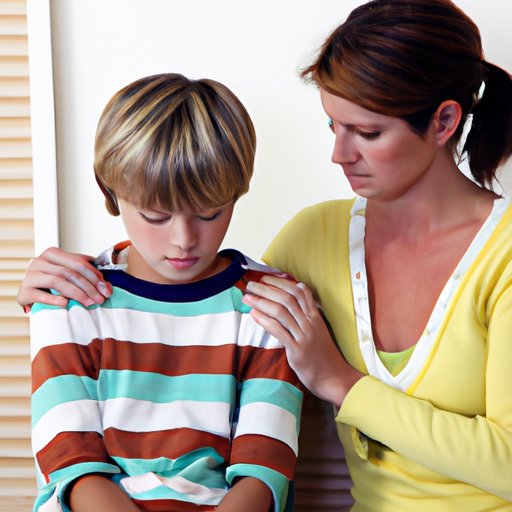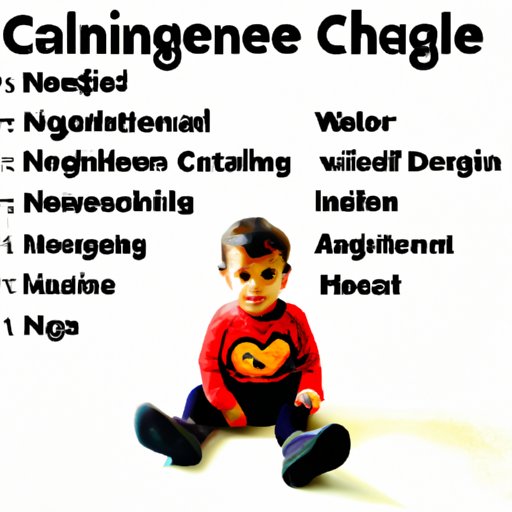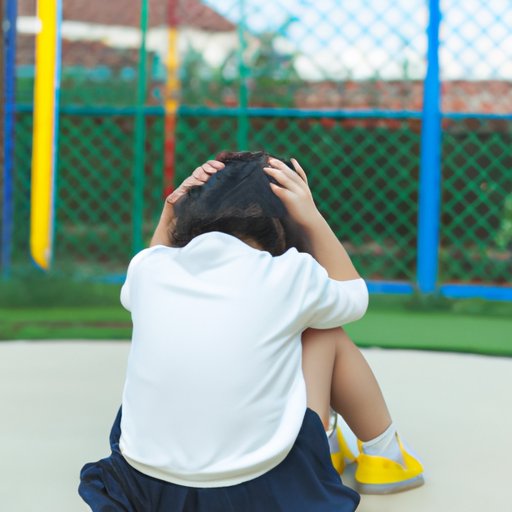Introduction
Child neglect is defined as when a parent or caregiver fails to provide for a child’s basic needs, such as food, clothing, shelter, medical care, supervision, and emotional support. It is estimated that one in four children experience some form of neglect in their lifetimes, and it is the most common type of child abuse. Neglect can have long-term consequences on a child’s physical, mental and emotional health, and can even lead to death.

Examining the Consequences of Child Neglect
The consequences of child neglect can vary depending on the age of the child and the severity of the neglect. It often begins with physical health problems, such as malnutrition, poor hygiene, and inadequate medical care. A study conducted by the American Academy of Pediatrics found that neglected children had higher rates of hospitalization, chronic health conditions, and developmental delays.
Neglect can also have a significant impact on a child’s mental and emotional health. Children who are neglected are more likely to suffer from depression, anxiety, and post-traumatic stress disorder. They may also display behavioral problems, such as aggression, impulsiveness, and difficulty forming relationships.
Neglect can also affect a child’s cognitive development. Studies have shown that neglected children are more likely to have lower IQ scores and academic performance than their peers. They may also have difficulty concentrating and memory problems.
The Impact of Long-Term Neglect on Children
Long-term neglect can have serious consequences on a child’s physical, social, and educational development. Neglected children are more likely to suffer from malnourishment, which can lead to stunted growth and poor physical development. They are also at risk of developing speech and language delays, as well as physical and learning disabilities.
Neglected children may also struggle to develop social skills, as they are often isolated from their peers and lack the opportunity to interact with other children. This can lead to difficulties forming relationships and low self-esteem. In addition, neglected children may not receive the education and guidance they need to reach their full potential, resulting in poor academic performance.
A Closer Look at How Bad Child Neglect Has to Be
It is important to note that there is a difference between neglect and physical abuse. Neglect is usually seen as less severe than physical abuse, but the consequences can be just as damaging. The severity of neglect can range from mild to extreme, and can include both intentional and unintentional acts.
In order to determine how bad neglect has to be, it is important to consider the impact it has on the child. Neglect that results in physical, mental, or emotional harm is considered to be more serious than neglect that does not. For example, if a parent fails to provide adequate nutrition or medical care, this would be considered more serious than if the parent simply fails to spend time with the child.

The Effects of Neglectful Parenting
Neglectful parenting can have a negative impact on a child’s sense of self-worth and self-esteem. Children who are neglected often feel unloved and unworthy of attention and affection. This can lead to feelings of insecurity, loneliness, and low self-esteem.
Neglected children can also struggle to cope with stress and difficult situations. Without proper guidance and support, they may not know how to effectively manage their emotions and may resort to unhealthy coping mechanisms, such as substance abuse or self-harm.

Exploring the Different Types of Child Neglect
There are several different types of child neglect. These include emotional neglect, educational neglect, medical neglect, and supervisory neglect. Emotional neglect occurs when a parent or caregiver fails to provide emotional support or respond to the child’s emotional needs. Educational neglect occurs when a parent fails to ensure the child receives an appropriate education. Medical neglect occurs when a parent or caregiver fails to provide necessary medical care. Supervisory neglect occurs when a parent or caregiver fails to provide adequate supervision for the child.
Conclusion
Child neglect is a serious issue that can have long-term consequences on a child’s physical, mental, and emotional health. It is important to understand how bad child neglect has to be in order to identify and address the problem. Neglect can range from mild to extreme, and can include both intentional and unintentional acts. It is also important to recognize the different types of neglect and their effects on a child’s development. If you suspect your child is being neglected, it is important to seek help immediately.
If you or someone you know is experiencing neglect or abuse, there are resources available to help. Organizations such as the National Child Abuse Hotline (1-800-422-4453) and the National Domestic Violence Hotline (1-800-799-7233) can provide assistance and information about how to get help.
(Note: Is this article not meeting your expectations? Do you have knowledge or insights to share? Unlock new opportunities and expand your reach by joining our authors team. Click Registration to join us and share your expertise with our readers.)
